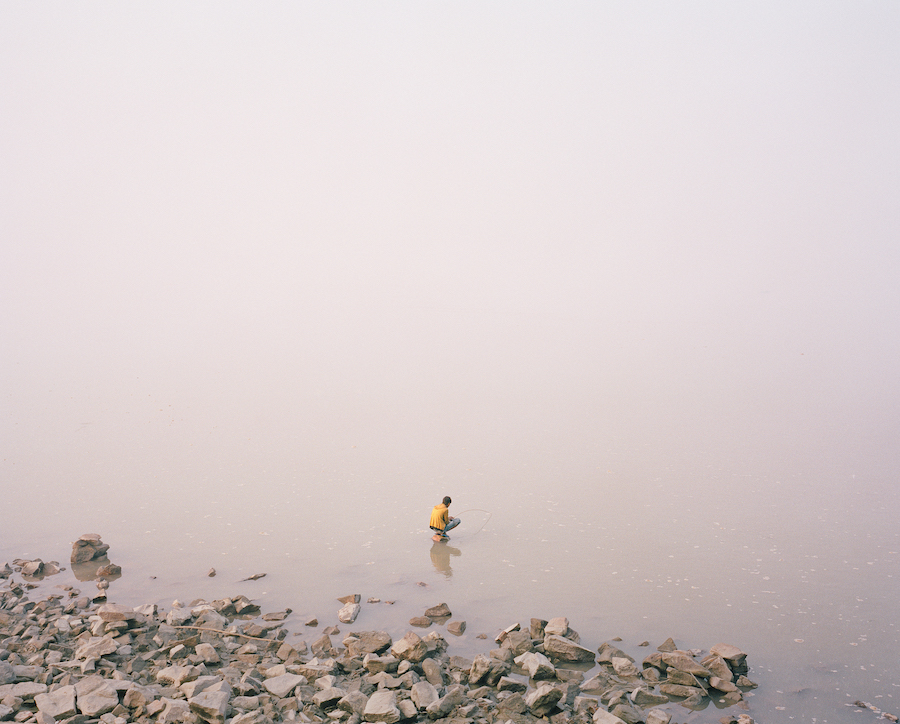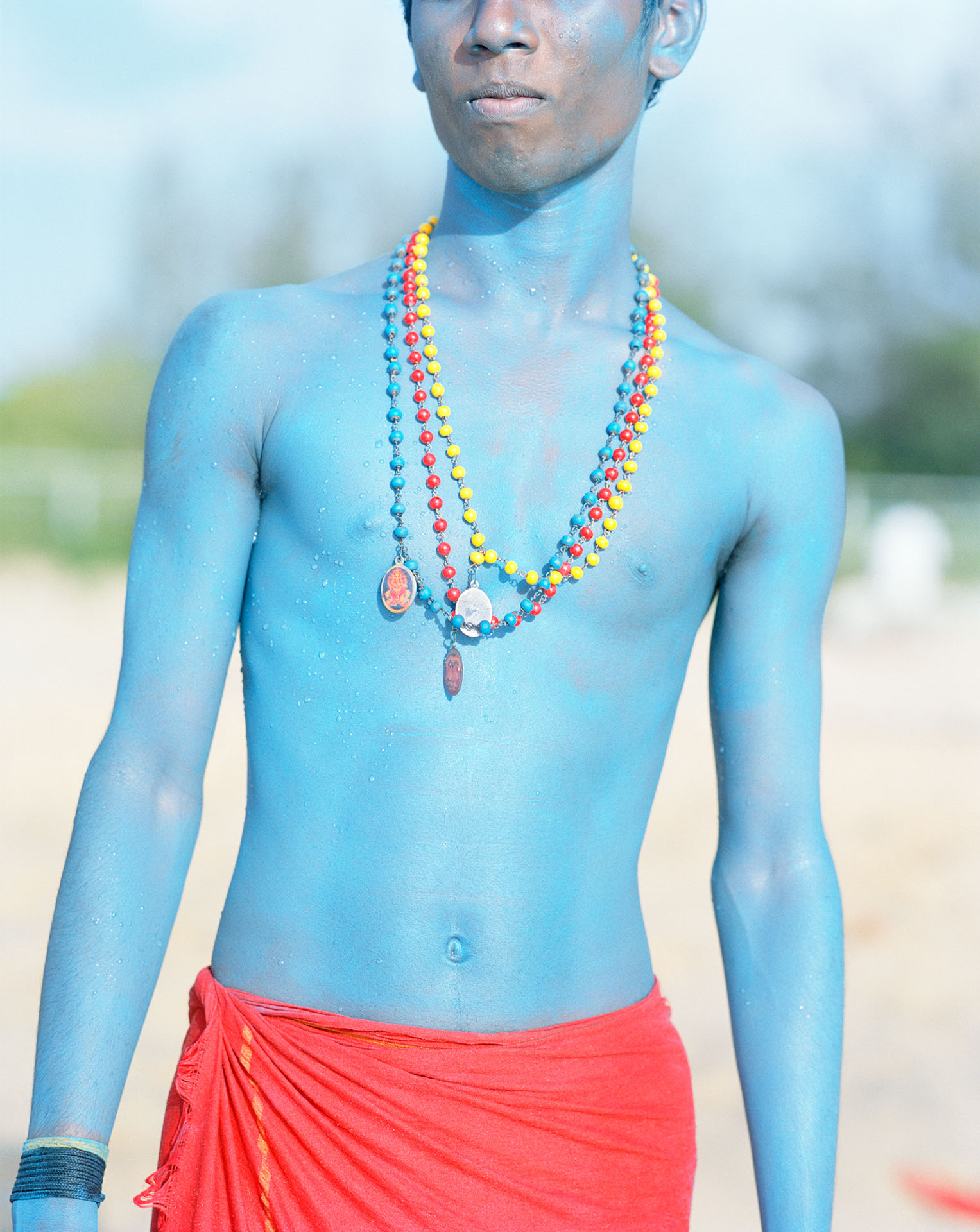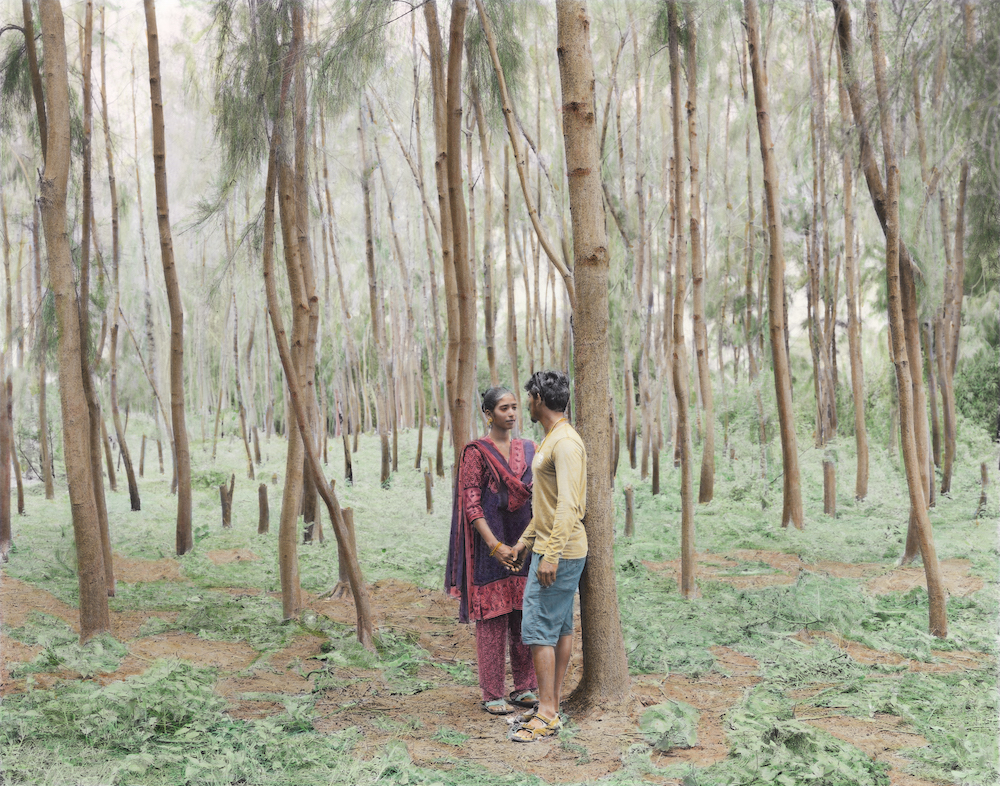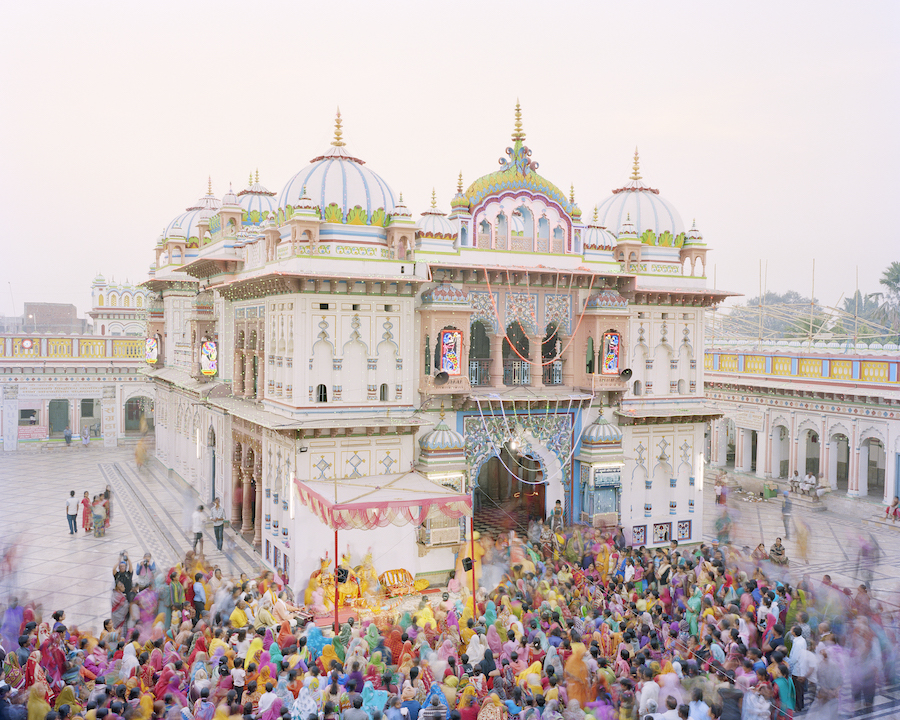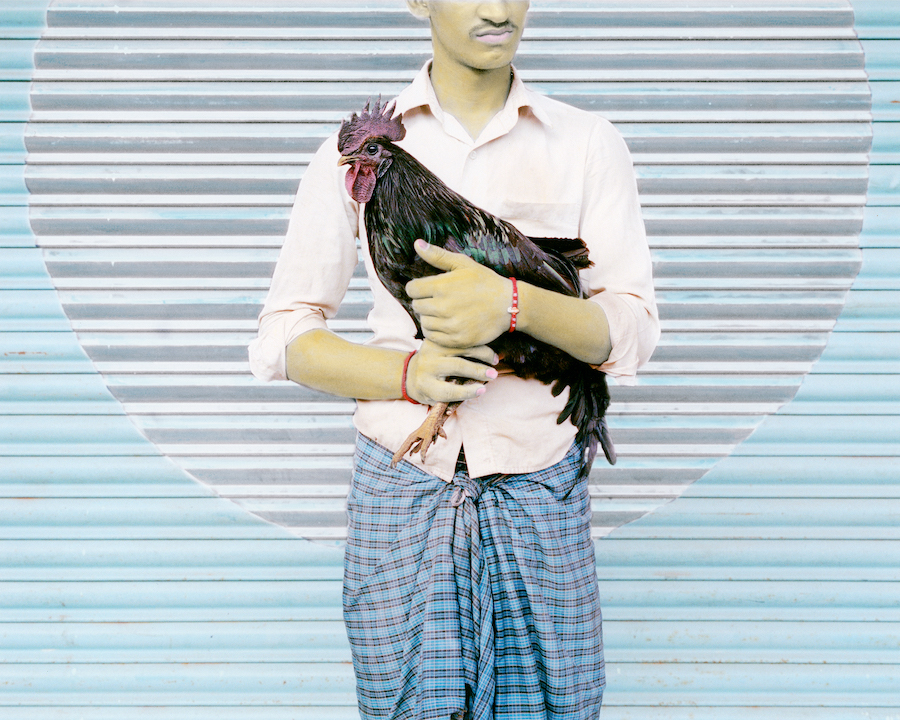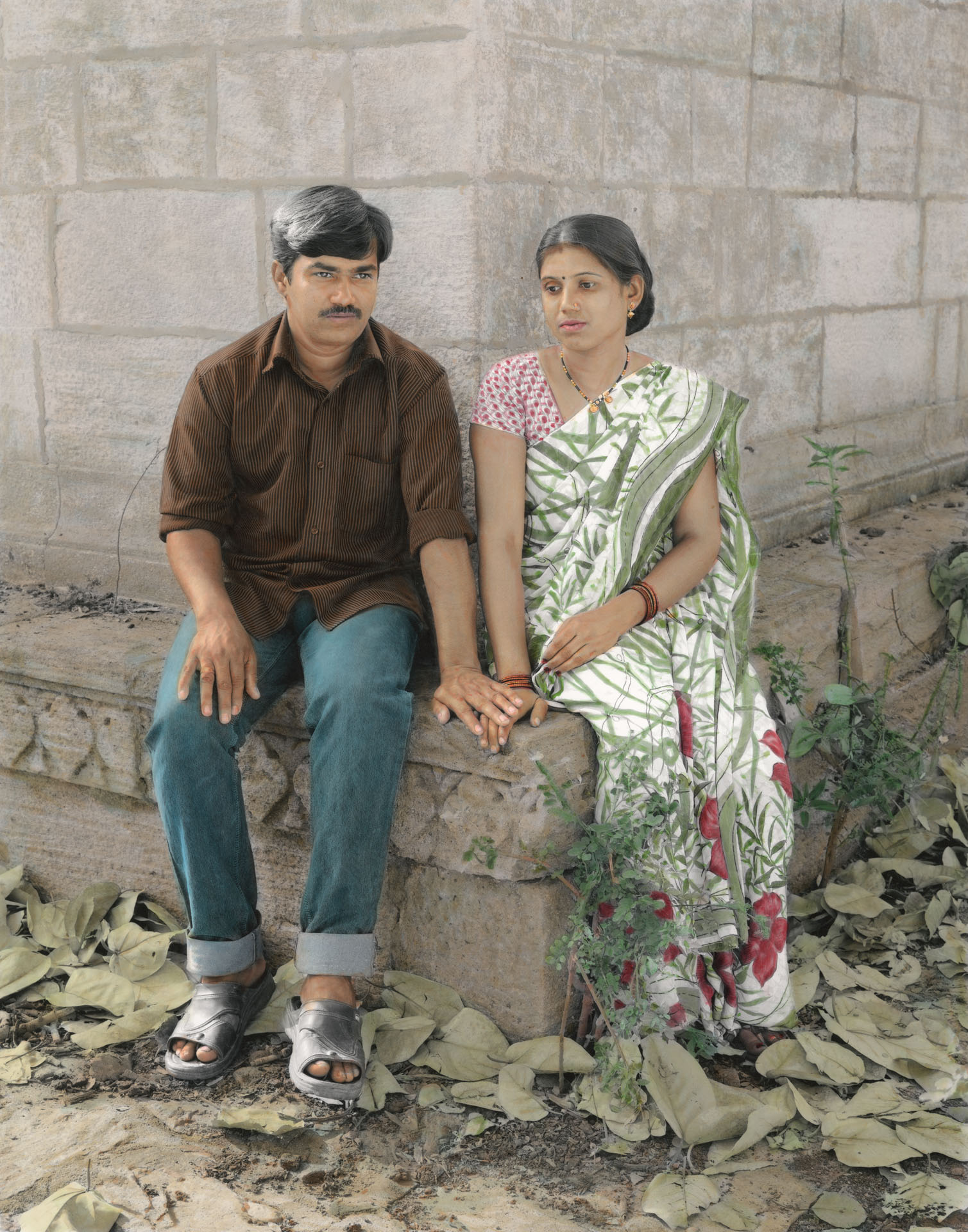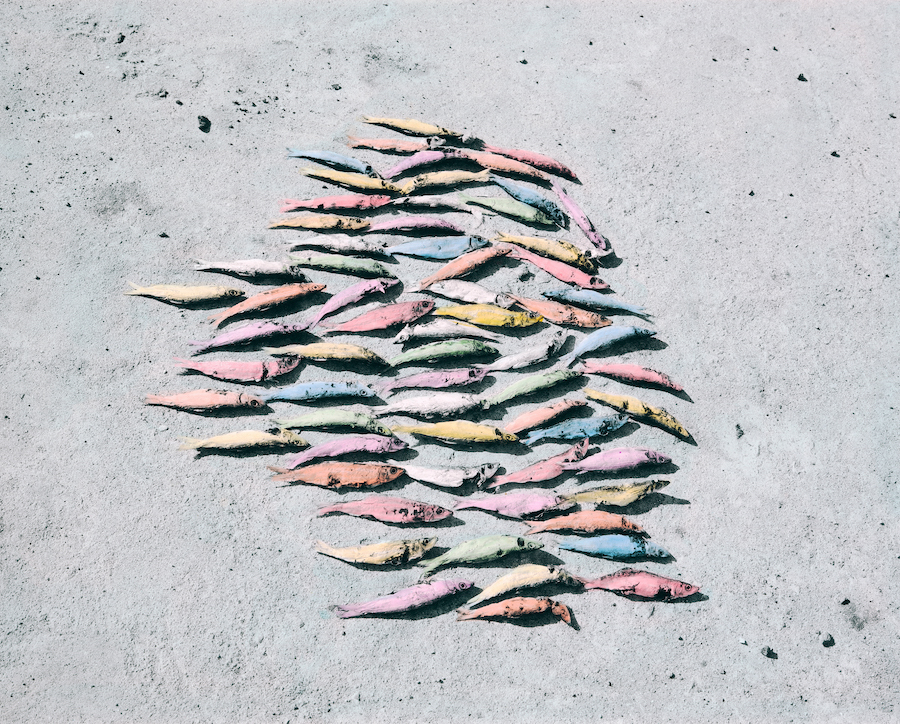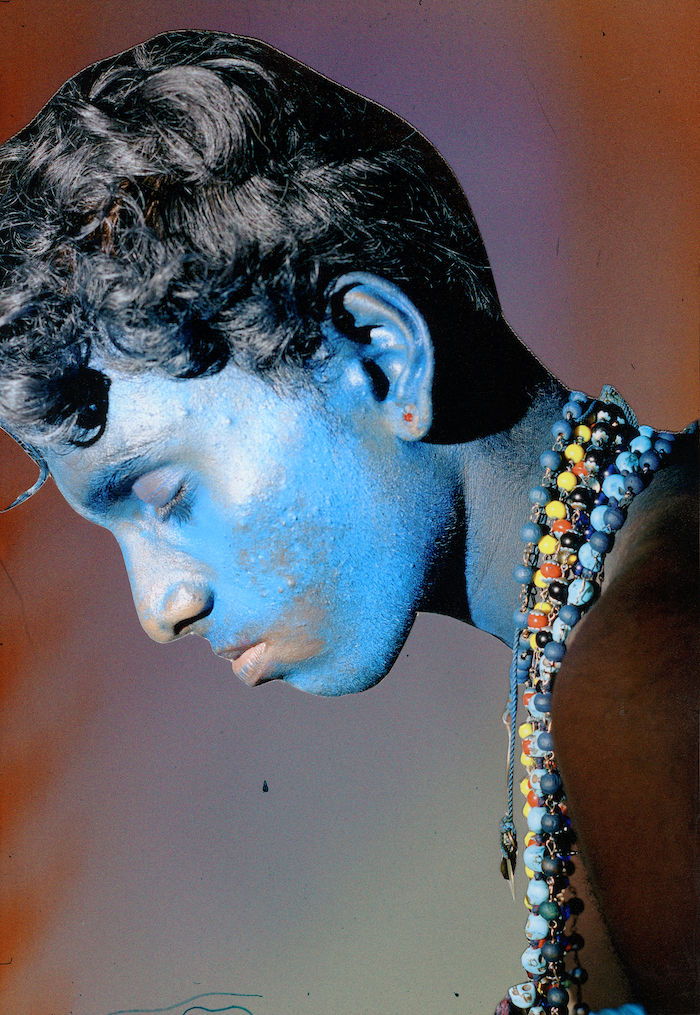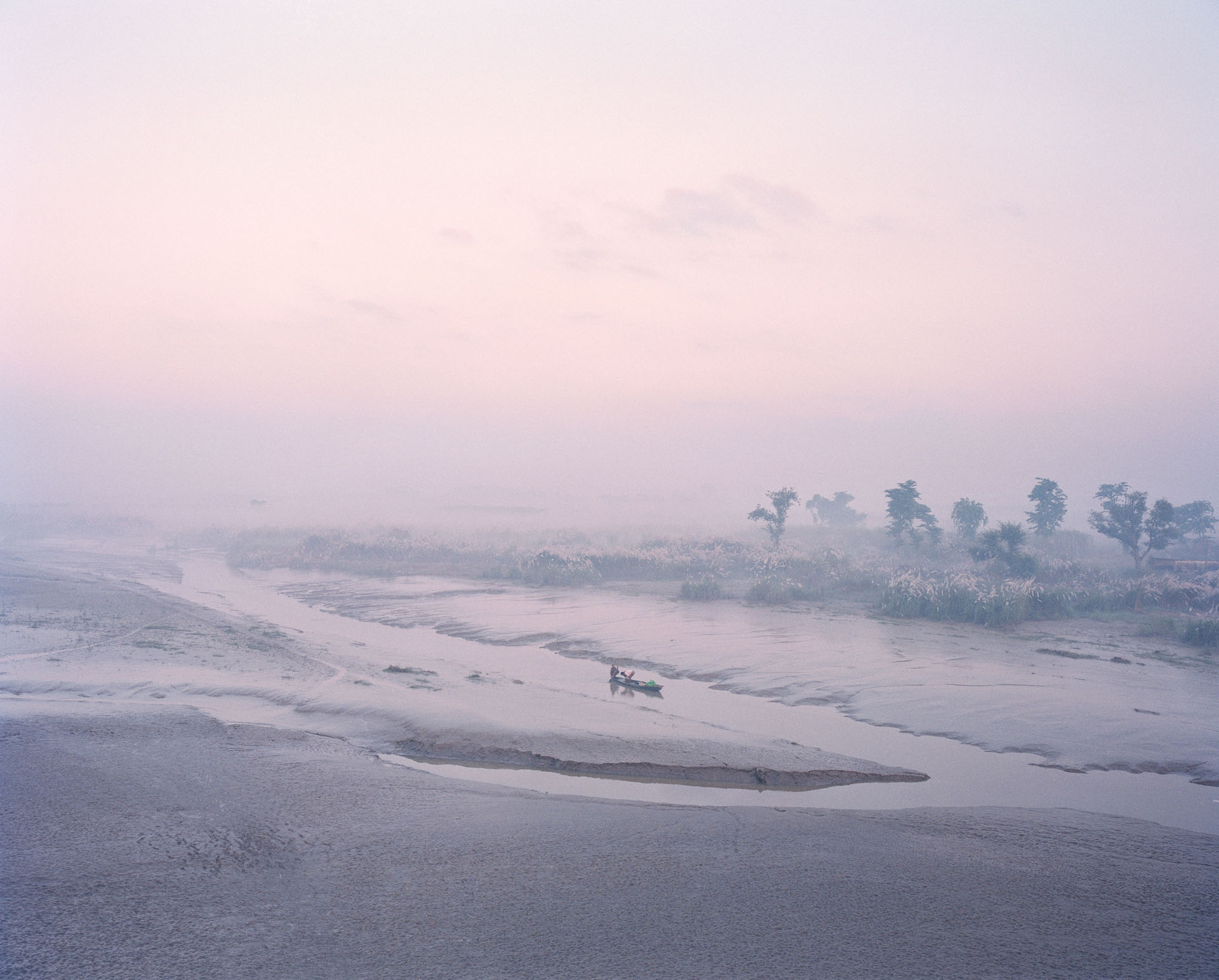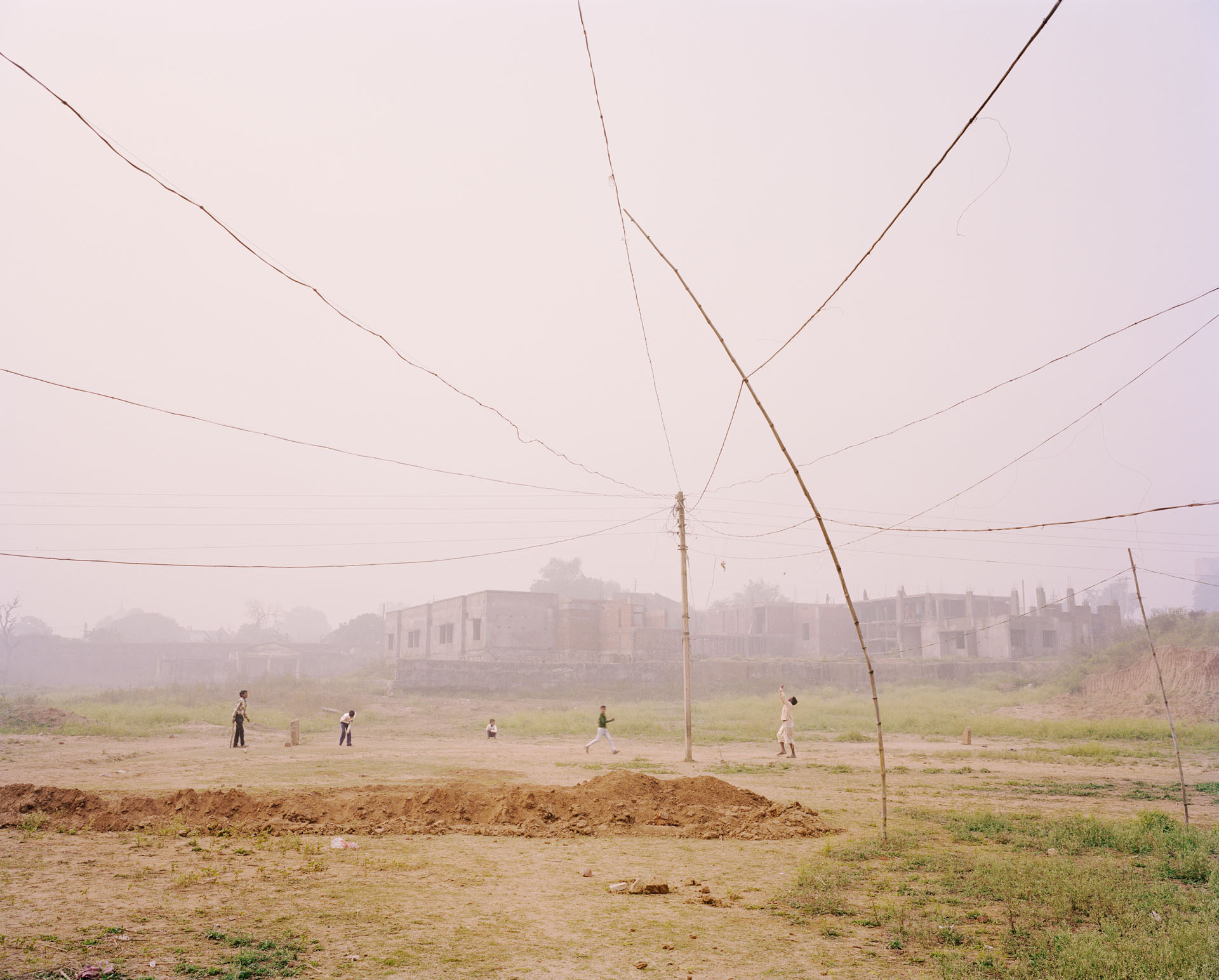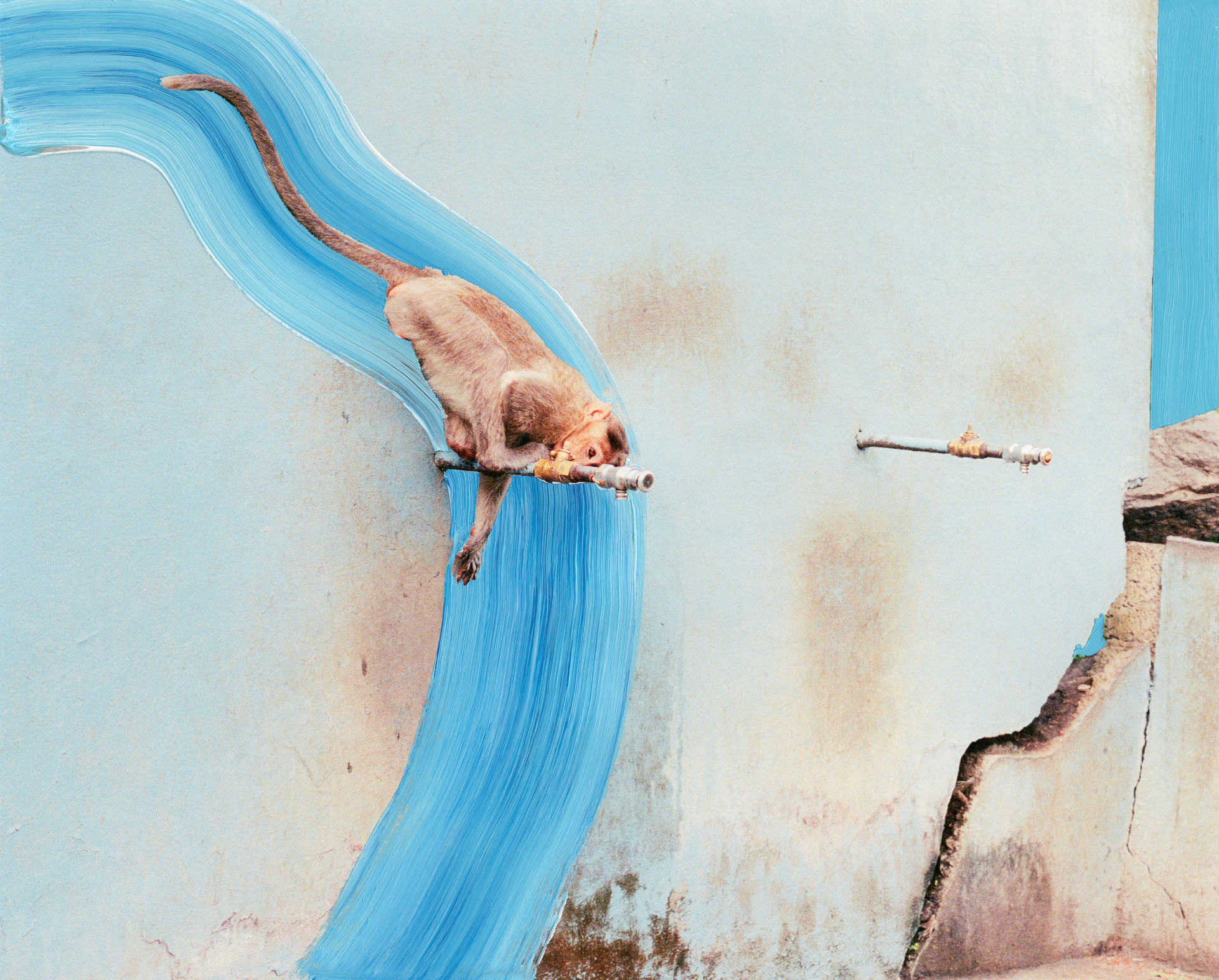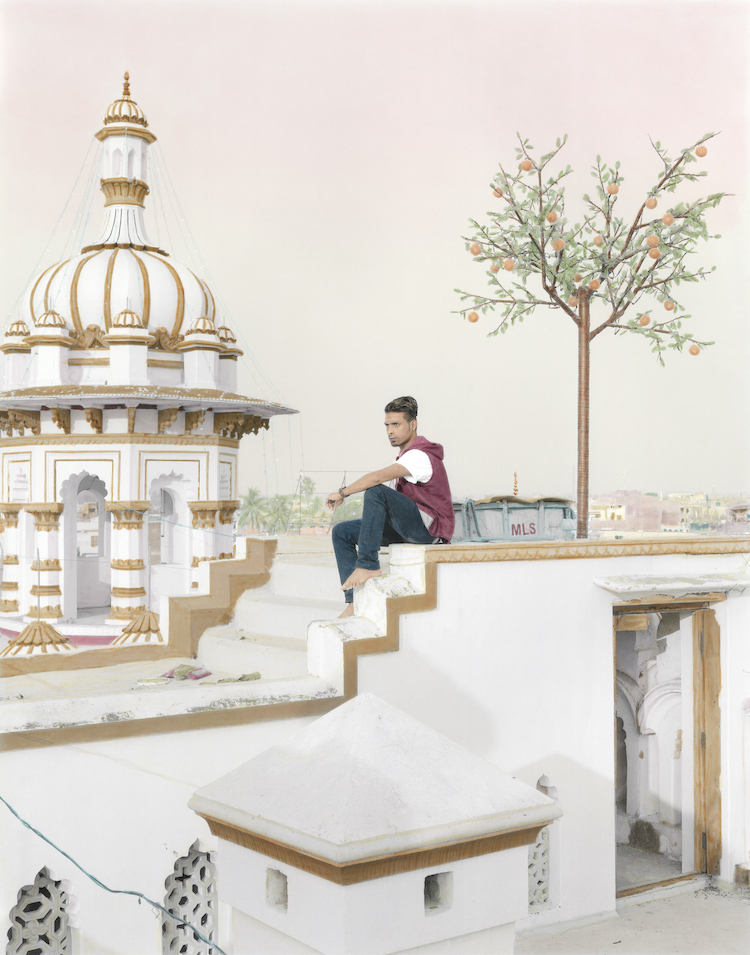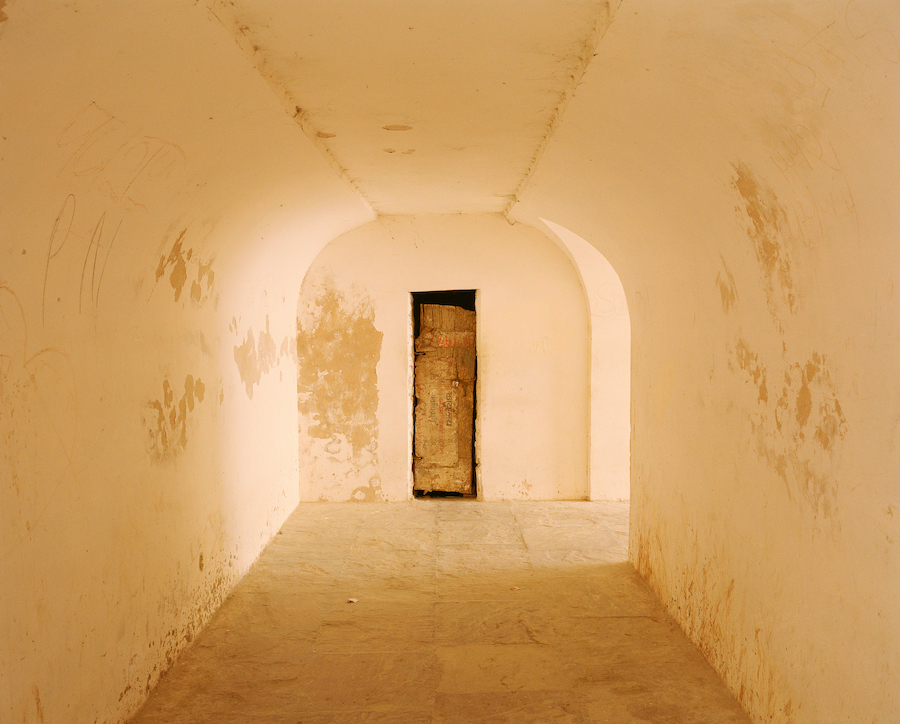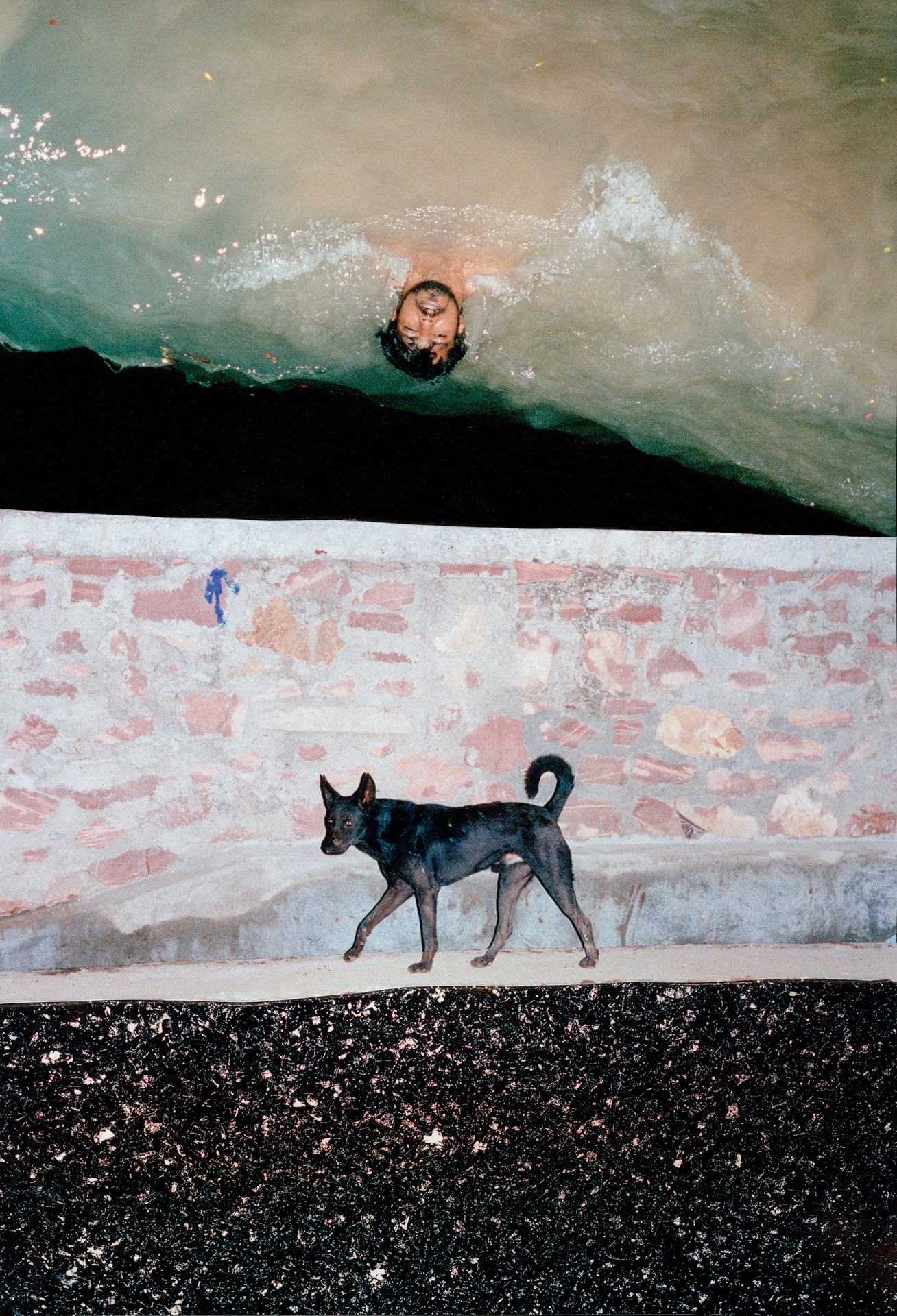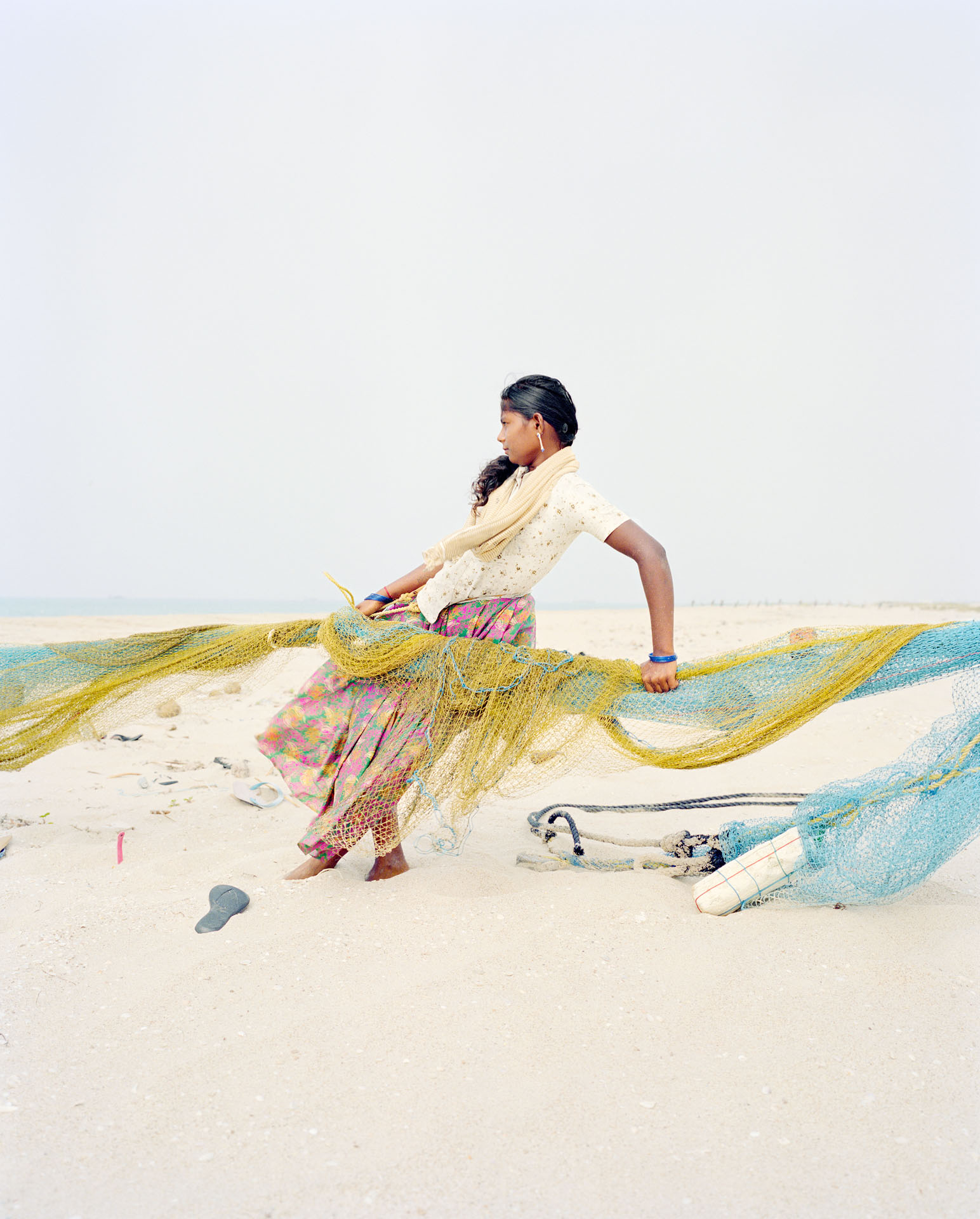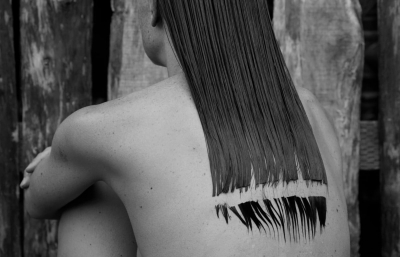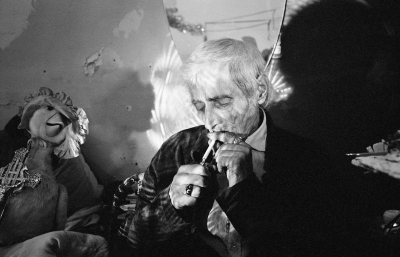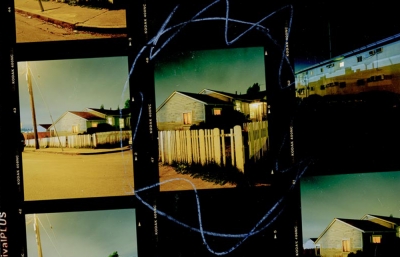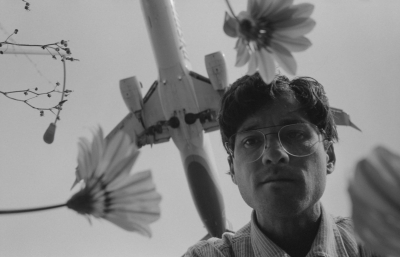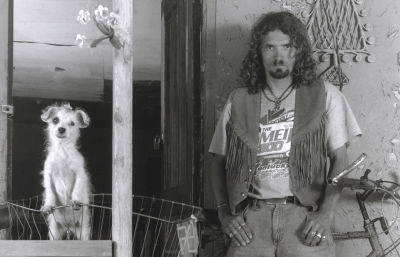Upon first setting foot in India at the age of 25, French photographer Vasantha Yogananthan had already determined that he would devote the next decade to creating a comprehensive photographic interpretation, resulting in seven books, in celebration of the ancient Sanskrit epic, The Ramayana. The text weaves exemplary tales of young prince Rama’s childhood, a forced exile with his wife Sita, her kidnapping by the demon Ravana, the subsequent war, and their triumphant return home to a complicated reign. The saga has maintained great importance in both religious and secular life since its origins in the 5th century BCE, the stories retold across South Asia and recounted in almost every medium, from painting, sculpture, and dance, to film, comic books, and video games. Inspired by the eclectic range of visual iterations and intrigued by the problems that storytelling presents within photography, Yogananthan sought to depict the story within images of normal daily life. “I was very much looking to find fiction within the realm of reality,” he says. “But in a sense, you’re looking for something that you will never find. You will never find fiction as-is within the reality that you’re experiencing on an everyday life basis.”
 In India, land informs myth, and myths inform the land. Like the millions who travel to sacred sites every year in search of meaning and understanding through experience of place, Yogananthan’s envisioning of ancient stories within the landscapes and people of present-day India led him on an unusual pilgrimage as he tracked stories of The Ramayana across the subcontinent. Deeply influenced by film, Yogananthan understood that the still image couldn’t render narrative as viscerally as cinema but was dedicated to viewing the parameters in gauging how photography might succeed in meeting such a challenge. “[That] was at the very core of the project,” he says. “It frames what you can and cannot do.” Over time, such constraints led to greater experimentation. After abandoning his initial documentary-style approach, he found freedom of vision in large and medium-format cameras that required patience but fostered more intimate connections with the people and places. Recognizing that the act of shooting and the more analytical process of understanding what he was doing needed space from one another, he balanced month-long trips to India with longer periods home in the studio, continually finding ways to discover a new approach for each trip. “It was a back and forth between conceptualizing very precisely the project and the idea and then, in the field, being very loose with how I would approach the places and the people I'd meet.”
In India, land informs myth, and myths inform the land. Like the millions who travel to sacred sites every year in search of meaning and understanding through experience of place, Yogananthan’s envisioning of ancient stories within the landscapes and people of present-day India led him on an unusual pilgrimage as he tracked stories of The Ramayana across the subcontinent. Deeply influenced by film, Yogananthan understood that the still image couldn’t render narrative as viscerally as cinema but was dedicated to viewing the parameters in gauging how photography might succeed in meeting such a challenge. “[That] was at the very core of the project,” he says. “It frames what you can and cannot do.” Over time, such constraints led to greater experimentation. After abandoning his initial documentary-style approach, he found freedom of vision in large and medium-format cameras that required patience but fostered more intimate connections with the people and places. Recognizing that the act of shooting and the more analytical process of understanding what he was doing needed space from one another, he balanced month-long trips to India with longer periods home in the studio, continually finding ways to discover a new approach for each trip. “It was a back and forth between conceptualizing very precisely the project and the idea and then, in the field, being very loose with how I would approach the places and the people I'd meet.”
Early on, he began collaborating with Jaykumar Shankar, a painter skilled in the rare art of hand-coloring black and white photographs. As Yogananthan searched for pictures lingering between fiction and reality, Shankar’s colors further imbued the scenes with an atmosphere of fantasy, the final images hovering between moments invented and moments found. In the last several books, including the final chapter, Amma, to be released this year, Yogananthan began painting and manipulating many of the images himself, diving into a world of colors, shapes, and brush strokes that fuse myth and reality. As those stories of the past are revealed within these images of the present, the future is born in the imagination. —Alex Nicholson
In September 2021, Chose Commune will release the culmination of Vasantha Yogananthan's A Myth of Two Souls, bringing together seven books and prints in a very special edition box set available exclusively through Assembly in the United States.
Explore the project on a special, dedicated website here.

